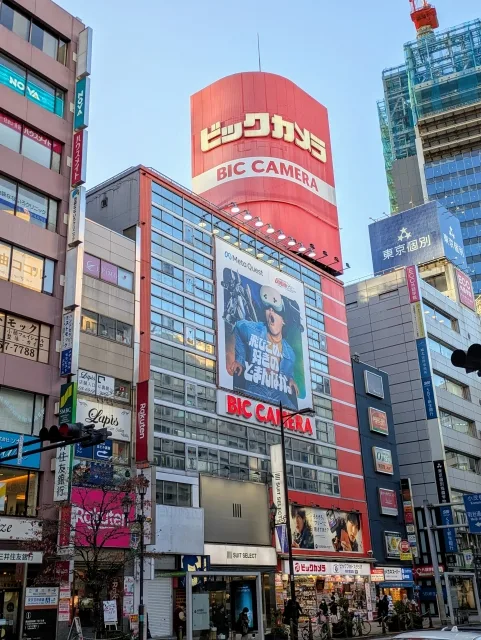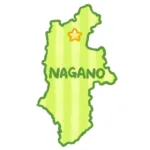When traveling to Japan, you’ll have opportunities to purchase everything from fascinating traditional crafts to cutting-edge technology. However, there are several important points to know about tax exemption systems, customs regulations, and shipping services. This guide provides the essential information you need to maximize your shopping experience in Japan.
Introduction: The Shopping Experience in Japan
Japan is known for its high-quality products and excellent customer service. From Tokyo’s glamorous Ginza and Shibuya districts to Kyoto’s traditional shopping streets, diverse shopping experiences await you throughout Japan. For foreign visitors, Japan’s unique products make particularly attractive souvenirs.
To enhance your shopping experience, it’s important to understand the tax exemption system and customs regulations. With the right knowledge, you can enjoy shopping without paying unnecessary taxes and successfully bring your purchases back to your home country.
Japan’s Tax Exemption System
Basics of the Tax Exemption System

In Japan, there is a “tax exemption system” that exempts consumption tax on products purchased by foreign tourists with the purpose of taking them out of Japan. This system is based on the idea that taking items out of the country is essentially the same as exporting them. When eligible foreign visitors purchase tax-exempt items at designated tax-free shops to take home as souvenirs, the consumption tax on those purchases is exempted.
Eligible Persons for Tax Exemption
The following individuals can use the tax exemption system:
- Non-residents with foreign nationality: Those with “Temporary Visitor,” “Diplomatic,” or “Official” residence status, or those permitted to stay in Japan under the Immigration Control and Refugee Recognition Act
- Non-residents with Japanese nationality: Those who have been confirmed by a certificate of residence or a copy of their family register that they have had an address or residence outside Japan for more than 2 years continuously
For Japanese nationals, the certificate of residence or copy of the family register must have been issued on or after the date that is 6 months before the date of their last entry into Japan.
Tax Exemption System Changes Coming in 2026
Important Changes: Japan’s tax exemption system will change significantly from November 2026. The government has included a revision of the tax exemption system for foreign visitors in the FY2025 tax reform outline. To prevent fraudulent use such as domestic reselling, the system will change to a “refund” method where the exempted tax amount is refunded at the time of departure after customs confirms that the items are being taken out of the country. This will apply to purchases made on or after November 1, 2026.
Under the current system, you can purchase items at tax-exempt prices at tax-free shops, but under the new system, you will purchase items at regular prices including consumption tax, and the tax amount will be refunded after customs confirms that you are taking the items out of the country when you depart. This aims to prevent fraudulent use through domestic reselling and promote appropriate use of the tax exemption.
Specific Procedure for the Refund Method (after November 2026):
- Purchase eligible items at regular prices (including consumption tax)
- Receive necessary documents from the tax-free shop (possibly electronic)
- Present your items and documents to customs when departing
- Once customs confirms the items are being taken out of the country, receive a refund of the consumption tax amount at a designated location
- Refund methods being considered include cash and credit card refunds
Deregulation of Consumable Items: In conjunction with the transition to the “refund method” aimed at preventing fraudulent use, special packaging for consumable items will be abolished, and the 500,000 yen upper limit will be removed, treating them the same as general items. Additionally, shops will no longer need to determine whether items are eligible for tax exemption, simplifying the procedure. This will streamline the current complex regulations and improve convenience for tourists.
Procedure for Shopping at Tax-Free Shops

How to Identify Tax-Free Shops
Tax-free shops display “TAX FREE” or “免税店” (tax-free shop) signs. Many shops in large department stores, electronics retailers, and tourist areas offer tax-free services. There are also numerous tax-free shops at airports.
Tax Exemption Procedure Flow
- Select items eligible for tax exemption
- Inform the cashier that you wish for tax exemption
- Present your passport (Important: Always bring a valid passport with an entry stamp)
- Fill out the necessary tax exemption documents
- In some cases, tax exemption certificates may be attached to your purchased items
Note: By using the Visit Japan Web service’s QR code at tax-free shops, your passport information can be provided more easily. Using this service makes the procedure smoother. As of 2025, this service is continuously being improved, so it’s recommended to check the latest status on the official website (Visit Japan Web).
Conditions for Tax Exemption
There are conditions for purchase amounts eligible for tax exemption:
- General items: 5,000 yen or more per purchase (tax excluded)
- Consumable items: 5,000 yen or more per purchase (tax excluded), with a total amount of 500,000 yen or less (upper limit to be abolished under the new system starting November 2026)
The current consumption tax rate is 10%, so tax exemption allows you to save approximately one-tenth of the product price. For example, when purchasing an item for 50,000 yen (tax excluded), you can save about 5,000 yen through tax exemption.
While it is generally permitted to consume or use tax-exempt purchased items before departure, be cautious about bulk purchases as they may be viewed as intended for resale.
Online Tax-Free Shopping Service
A convenient “online tax-free shopping” service allows you to order online before or during your trip and pick up your items at accommodation facilities, airports, or tax-free shops in town. This saves purchase time after arrival and allows you to enjoy sightseeing without carrying bulky items.
The range of available products is extensive, including electronics, pharmaceuticals, cosmetics, food, stationery, kitchen and daily necessities, books, and Japanese specialty products. When picking up at the designated location, you’ll need to complete the payment and tax exemption procedures, so bring a communication device connected to the internet such as a smartphone, credit card or electronic money, and your passport with the Japan entry date stamped.
Note: Payment must be made by card or electronic money, not cash. Also, the purchaser must pick up the items in person.
Customs Procedures When Returning Home
Duty-Free Allowances and Taxation in Your Home Country
When bringing items back to your home country from abroad, each country has its own duty-free allowances (range where no customs duties apply). It’s recommended to check your home country’s customs regulations before returning.
Example of duty-free allowances when entering Japan (for reference for Japanese nationals or those returning to Japan): For carried items or separately shipped items, customs duties are exempted within the following range per person entering the country, limited to items recognized as for personal use. If you have both carried items and separately shipped items, they are combined.
- Alcohol: Up to 3 bottles (760ml/bottle)
- Tobacco: Restrictions apply (check the latest information from Japan Customs)
- Other items: Up to 200,000 yen in total (if recognized as for personal use)
- Items with an overseas market value of less than 10,000 yen per item do not need to be included in the 200,000 yen duty-free allowance
Age restrictions: “Alcohol” and “tobacco” are not duty-free for those under 20 years of age. For children under 6 years old, items other than those clearly recognized as for the child’s own use, such as toys, are not duty-free.
Declaration method: The “Declaration Form for Accompanied and Unaccompanied Articles” can be filled out at the customs counter upon return, but prior online application using Visit Japan Web is also possible for smoother procedures.
Items That Cannot Be Taken Out of/Into Japan
The following items may be restricted or prohibited from being taken out of the country or brought into your home country:
- Prohibited drugs/narcotics: Even if legal in some countries, they may be illegal in Japan
- Animals and plants protected by the Washington Convention: Taxidermy, fur, leather products, etc.
- Fresh foods: Vegetables, fruits, meat products, etc. (regulations vary by country)
- Counterfeit goods/pirated copies: Fake brand items or copied products
- Large amounts of cash: Many countries require declaration (1 million yen or more in Japan’s case)
Caution regarding meat products: Meat such as beef, pork, chicken, eggs, ham, sausage, bacon, beef jerky, and other meat products are subject to animal quarantine when brought into Japan. It’s recommended to check each country’s regulations in advance.
Convenient Shipping Services
International Shipping Services
If you want to send items purchased in Japan directly to your home country, the following services are available:
- EMS (Express Mail Service): International shipping service provided by Japan Post
- International Courier Services: Services from private shipping companies such as Yamato Transport and Sagawa Express
- FedEx, DHL, UPS, and other international shipping services: Shipping available to countries around the world
EMS is a service that allows you to send documents and packages overseas speedily. Documents and packages sent via EMS typically reach their destination within 2-4 days.
Each service has different rates and delivery times depending on the shipping method (the following are estimates and may vary depending on the destination country/region and local conditions):
- Air mail: Delivered in approximately 3-6 days (higher cost)
- SAL mail: Delivered in approximately 6-13 days (less expensive than air mail)
- Surface mail: Delivered in approximately 1-3 months (least expensive)
Rate examples (approximate costs for shipping a 100-size, 10kg package from Japan to overseas):
- EMS (to Asian regions): From about 8,000 yen
- International courier services (to Asian regions): From about 10,000 yen
- Surface mail (to countries worldwide): From about 5,000 yen
When shipping, be aware of import regulations and customs duties in the destination country. Especially for food, cosmetics, electronic devices, etc., regulations vary by country.
Hands-Free Tourism Services
To eliminate the inconvenience of carrying luggage while sightseeing, “hands-free tourism” services are available. Hands-free tourism refers to services that provide a comfortable, hands-free environment by temporarily storing luggage at reception counters set up at airports, stations, commercial facilities, etc., or by delivering luggage to airports, stations, hotels, homes, etc., eliminating the inconvenience of carrying large luggage when traveling or moving around.
Main services:
- Temporary storage service: Store your luggage while sightseeing
- Same-day delivery service: Send luggage from the airport to your hotel, or from your hotel to the airport
- Inter-accommodation delivery: Move luggage between accommodations during your trip
The “Hands-Free Tourism” common logo mark displayed at reception counters in public transportation, stores, and facilities improves identification as a hands-free tourism counter for foreign travelers, enhancing convenience for foreign visitors. Look for this logo mark to use the service.
Hands-Free Tourism Services in Major Areas:
- Tokyo: Major transportation hubs such as Tokyo Station, Shinjuku Station, Haneda Airport, Narita Airport
- Kyoto: Around tourist attractions such as Kyoto Station, Arashiyama, Gion
- Osaka: Osaka Station, Shin-Osaka Station, Kansai International Airport, etc.
- Other tourist destinations: Numerous service points in popular tourist destinations such as Hokkaido and Okinawa
Approximate fees:
- Temporary storage: From 500 yen per item/day
- Airport → Hotel delivery: From 1,500 yen per item
- Inter-hotel delivery: From 2,000 yen per item
Many operators including Yamato Transport, Sagawa Express, and Japan Post provide hands-free tourism services. Specialized services for private accommodations and hotels such as “Tebura-kun” have also emerged.
Summary

Shopping in Japan is an attractive activity where you can experience high-quality products and excellent service. By utilizing the tax exemption system and understanding customs regulations, you can enjoy shopping more wisely.
Japan is constantly working to improve convenience for foreign visitors, with the new tax exemption system (refund method) starting in November 2026 and hands-free tourism services. We hope your shopping experience in Japan will be wonderful.
When shopping, always bring your passport and check the conditions for tax exemption. It’s also recommended to check in advance the restrictions for bringing items back to your home country. A variety of attractive products, from traditional Japanese crafts to the latest electronic devices, await you.
References
- National Tax Agency, “Eligible Foreign Travelers for Tax-Free Purchases”, https://www.nta.go.jp/taxes/shiraberu/taxanswer/shohi/6559.htm, Accessed: April 28, 2025
- Japan Tourism Agency, “Changes to the Consumption Tax Exemption System for Foreign Visitors from April 1, 2023”, https://www.mlit.go.jp/kankocho/page02_000190.html, Accessed: April 28, 2025
- Tourism Economy Newspaper, “【Inbound Tax Exemption System】Transition to Refund Method from November 2026, ‘Consumables’ Upper Limit Abolished”, https://www.kankokeizai.com/, Accessed: April 28, 2025
- Japan Tourism Agency, “Notice of Consumption Tax Exemption System Reform (Effective April 1, 2023) | Consumption Tax Exemption Shop Site”, https://www.mlit.go.jp/kankocho/tax-free/reiwa4kaisei.html, Accessed: April 28, 2025
- Japan Customs, “Duty-Free Allowances for International Travelers”, https://www.customs.go.jp/kaigairyoko/menzei.htm, Accessed: April 28, 2025
- LIVE JAPAN, “【New System Starting November 2026】What is Japan’s Tax Exemption System? Explaining Conditions, Procedure Flow, and Frequently Asked Questions”, https://livejapan.com/ja/article-a0000238/, Accessed: April 28, 2025
- Sagawa Express, “SAGAWA Hands-Free Tourism”, https://www.sagawa-exp.co.jp/ttk/, Accessed: April 28, 2025
- Ministry of Land, Infrastructure, Transport and Tourism, “Logistics: Promotion of Hands-Free Tourism”, https://www.mlit.go.jp/seisakutokatsu/freight/seisakutokatsu_freight_tk1_000069.html, Accessed: April 28, 2025
- Yamato Transport, “Hands-Free Service”, https://www.kuronekoyamato.co.jp/ytc/customer/send/services/hands-freetravel/, Accessed: April 28, 2025
- Japan Private Lodging Association, “Tebura-kun”, https://prtimes.jp/main/html/rd/p/000000021.000042174.html, Accessed: April 28, 2025
- Japan Customs, “Customs Procedures for Entry and Return”, https://www.customs.go.jp/kaigairyoko/index.htm, Accessed: April 28, 2025
- Japan Post, “International Mail”, https://www.post.japanpost.jp/int/index.html, Accessed: April 28, 2025



コメント